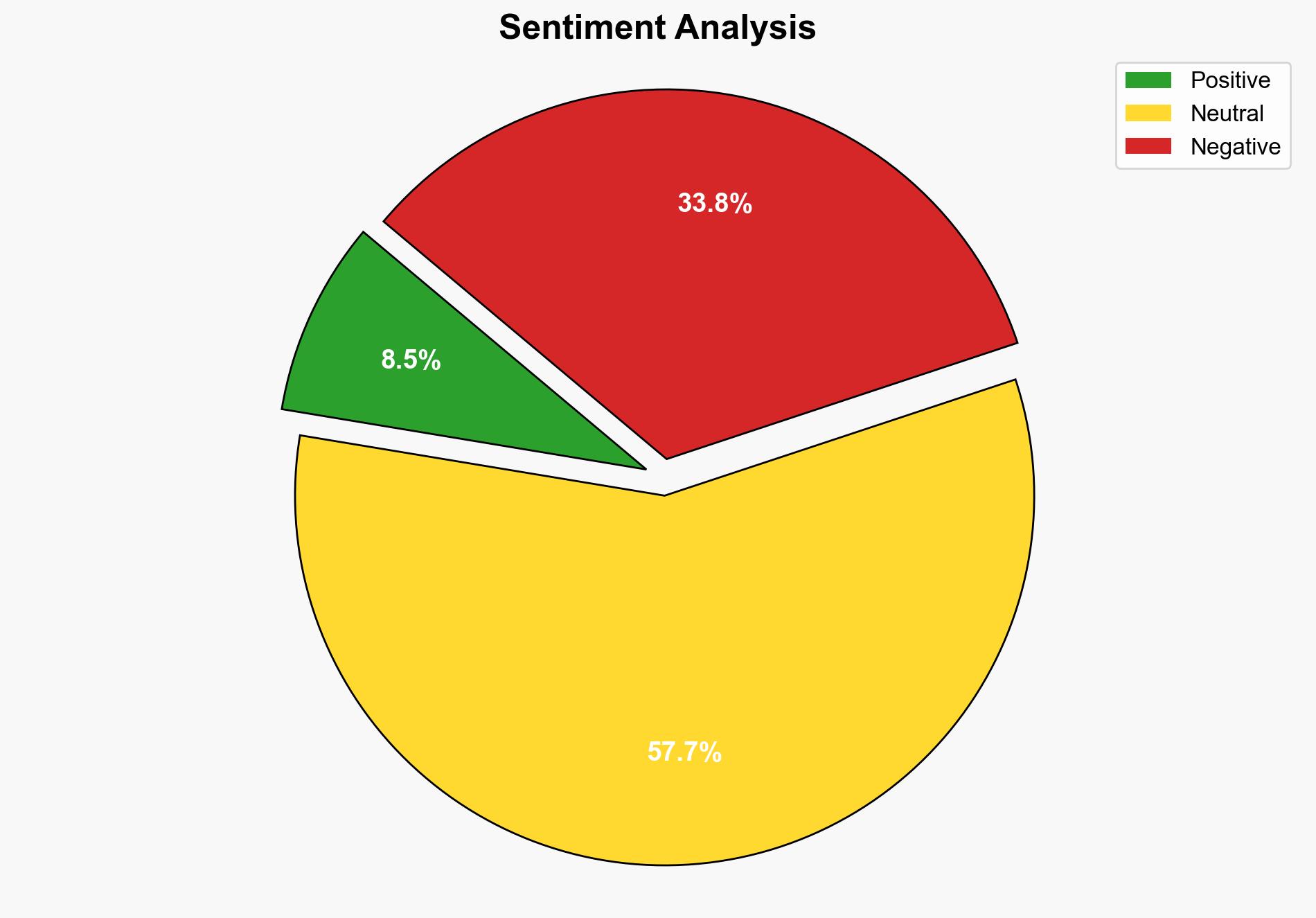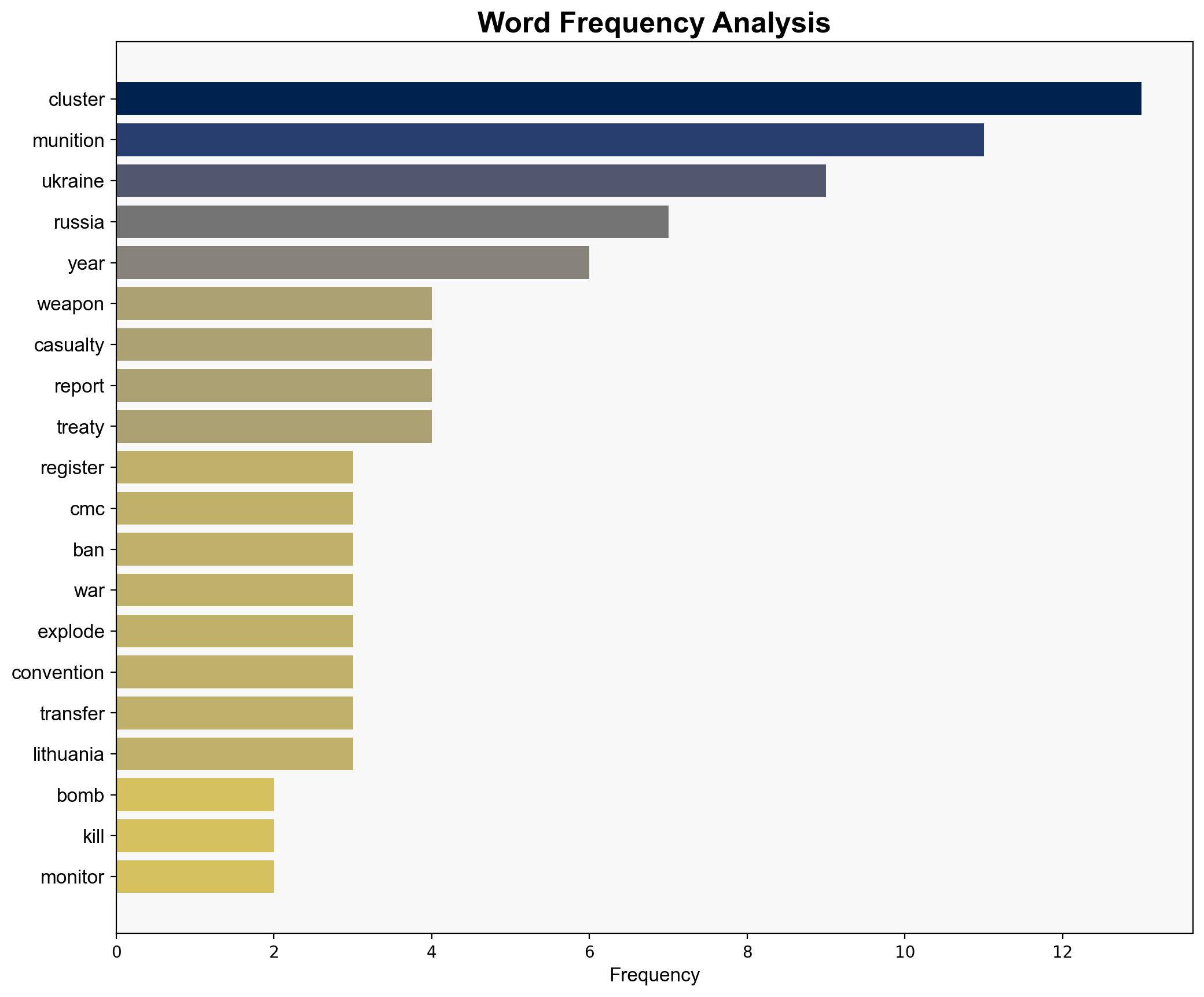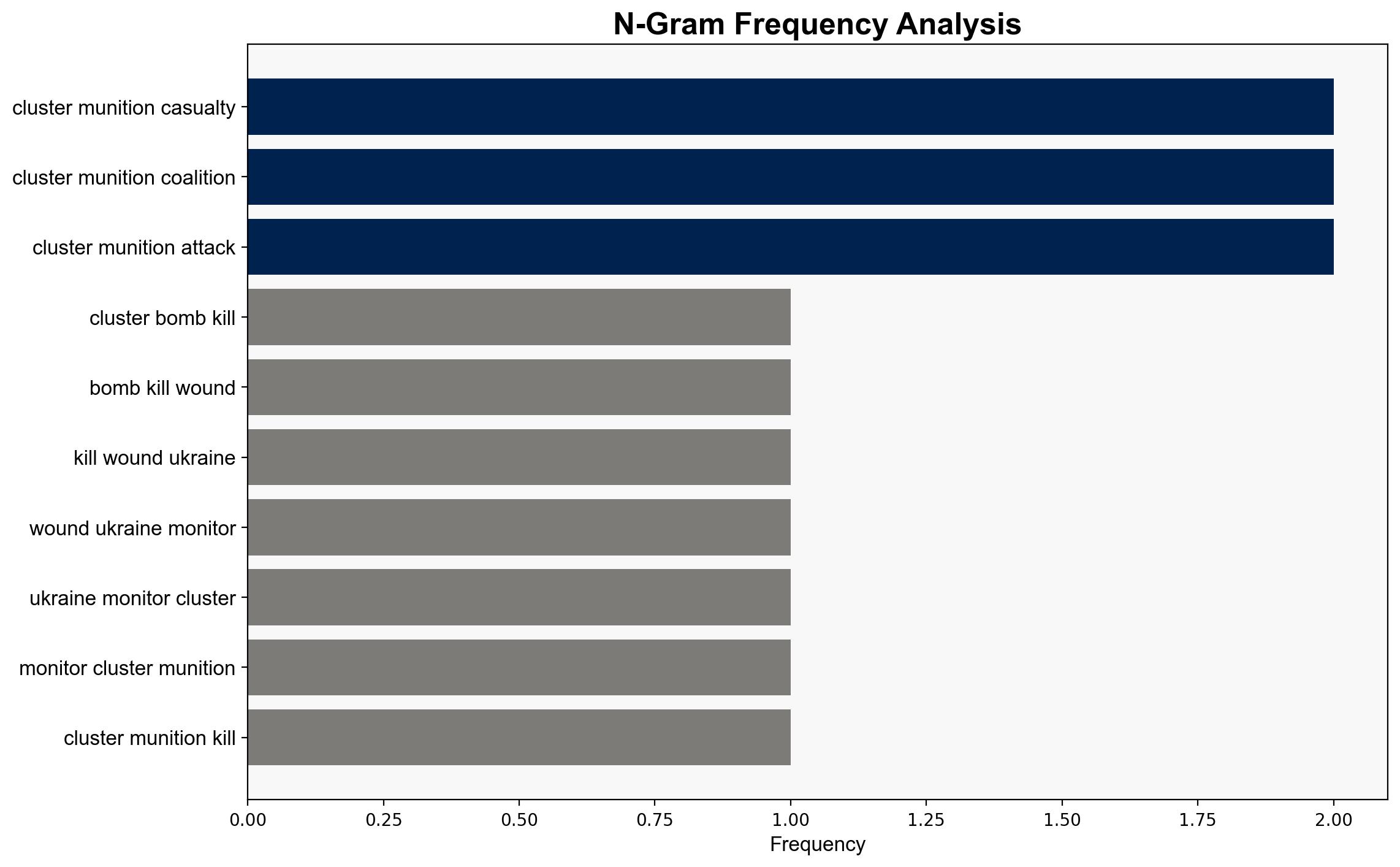Cluster Bombs Kill Wound Over 1200 In Ukraine Since 2022 Monitor – International Business Times
Published on: 2025-09-15
Intelligence Report: Cluster Bombs Kill Wound Over 1200 In Ukraine Since 2022 Monitor – International Business Times
1. BLUF (Bottom Line Up Front)
The strategic judgment indicates a high likelihood that both Russia and Ukraine have utilized cluster munitions, contributing to significant civilian casualties. The most supported hypothesis is that Russia’s extensive use of cluster munitions has been a major factor, exacerbated by Ukraine’s potential retaliatory use. The recommended action is to increase diplomatic pressure on both nations to adhere to international conventions banning such weapons, with a confidence level of moderate due to the complex geopolitical context.
2. Competing Hypotheses
1. **Hypothesis A**: Russia is the primary user of cluster munitions in Ukraine, leading to the majority of casualties. This aligns with historical patterns of Russia’s military tactics and the reported extensive use of banned weapons.
2. **Hypothesis B**: Both Russia and Ukraine have deployed cluster munitions, with Ukraine potentially using them in retaliation or as a strategic necessity, contributing to the high casualty figures.
Using ACH 2.0, Hypothesis A is better supported due to the consistent reports of Russia’s use of such munitions and its historical disregard for international weapon bans. However, Hypothesis B cannot be entirely dismissed given the evidence of cluster munitions found in Ukrainian-controlled areas.
3. Key Assumptions and Red Flags
– **Assumptions**: It is assumed that all reported casualties are directly linked to cluster munitions and not other forms of artillery. There is also an assumption that Ukraine’s use, if any, is significantly less than Russia’s.
– **Red Flags**: The potential underreporting of casualties and the lack of clear attribution for all incidents are major concerns. The presence of munitions with Korean markings raises questions about external involvement or supply chains.
4. Implications and Strategic Risks
The continued use of cluster munitions poses a significant threat to civilian safety and international norms. The risk of escalation remains high, with potential for increased involvement from other nations either through direct support or arms supply. Economically, the destruction of infrastructure could lead to long-term regional instability. Geopolitically, this undermines efforts to establish international norms against such weapons.
5. Recommendations and Outlook
- Enhance diplomatic efforts to enforce adherence to the Convention on Cluster Munitions by both Russia and Ukraine.
- Increase monitoring and verification mechanisms to accurately attribute the use of cluster munitions.
- Scenario Projections:
- Best: Successful diplomatic intervention leads to a ceasefire and adherence to international norms.
- Worst: Escalation with increased civilian casualties and further international involvement.
- Most Likely: Continued sporadic use of cluster munitions with ongoing international condemnation but limited immediate resolution.
6. Key Individuals and Entities
– Tamar Gabelnick, head of the Cluster Munition Coalition, is a key figure in advocating against the use of these weapons and highlighting the implications of treaty withdrawals.
7. Thematic Tags
national security threats, international law, arms control, regional conflict





